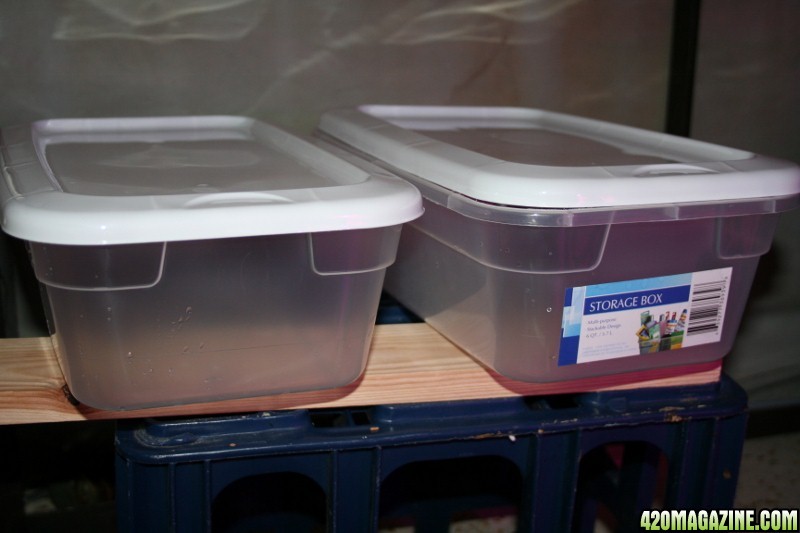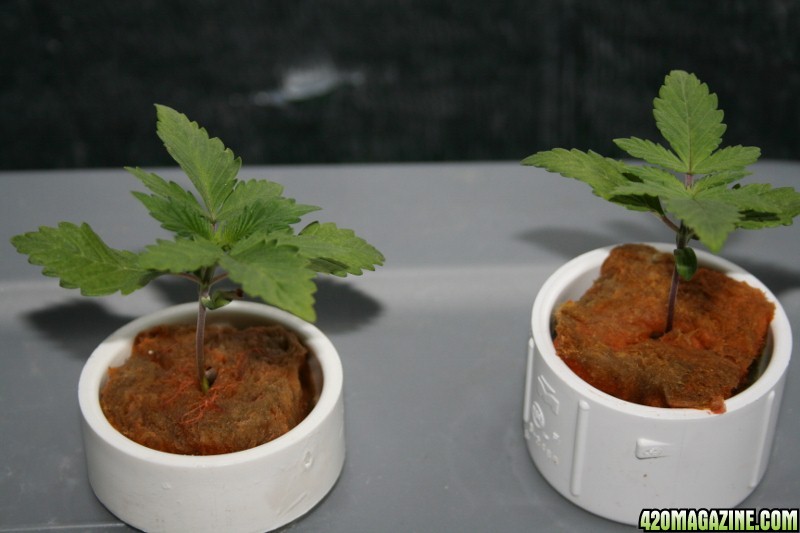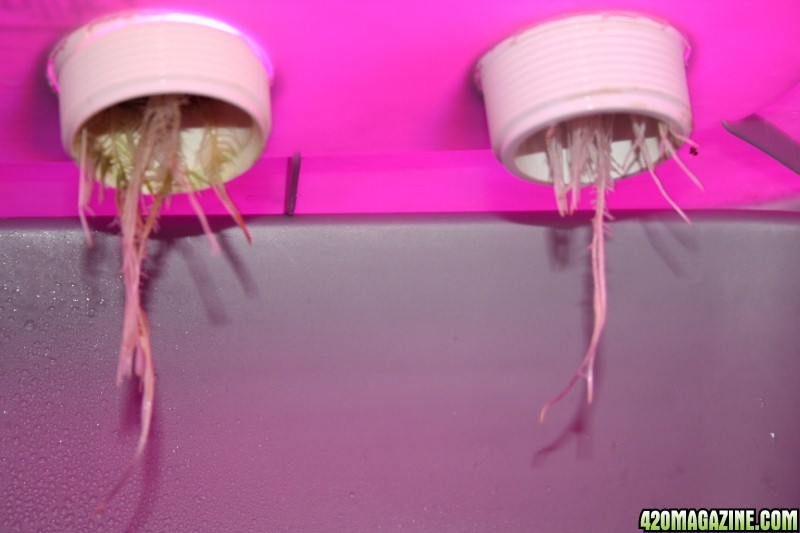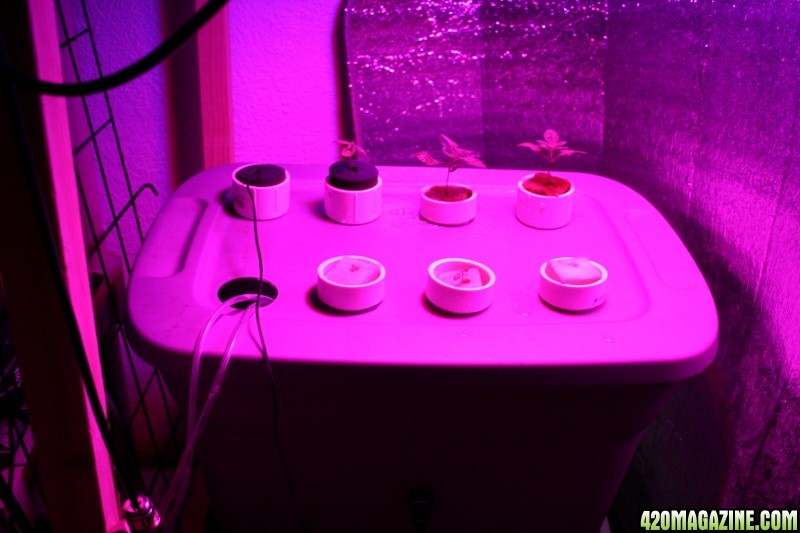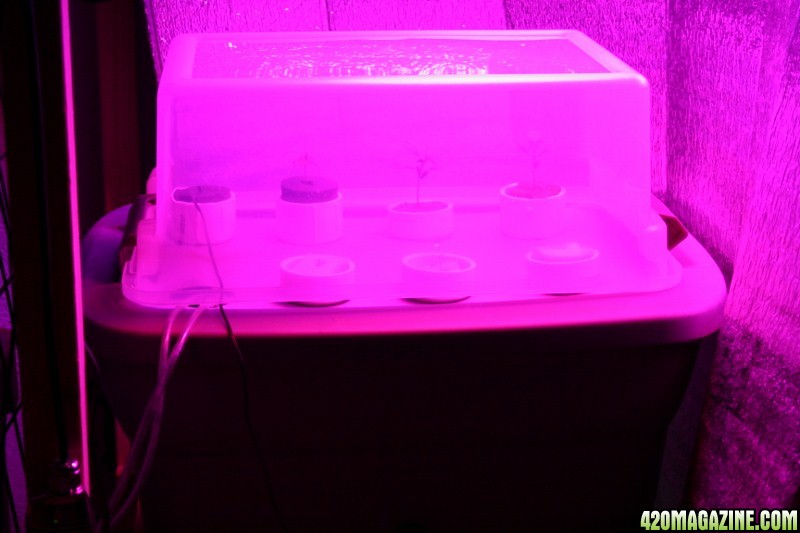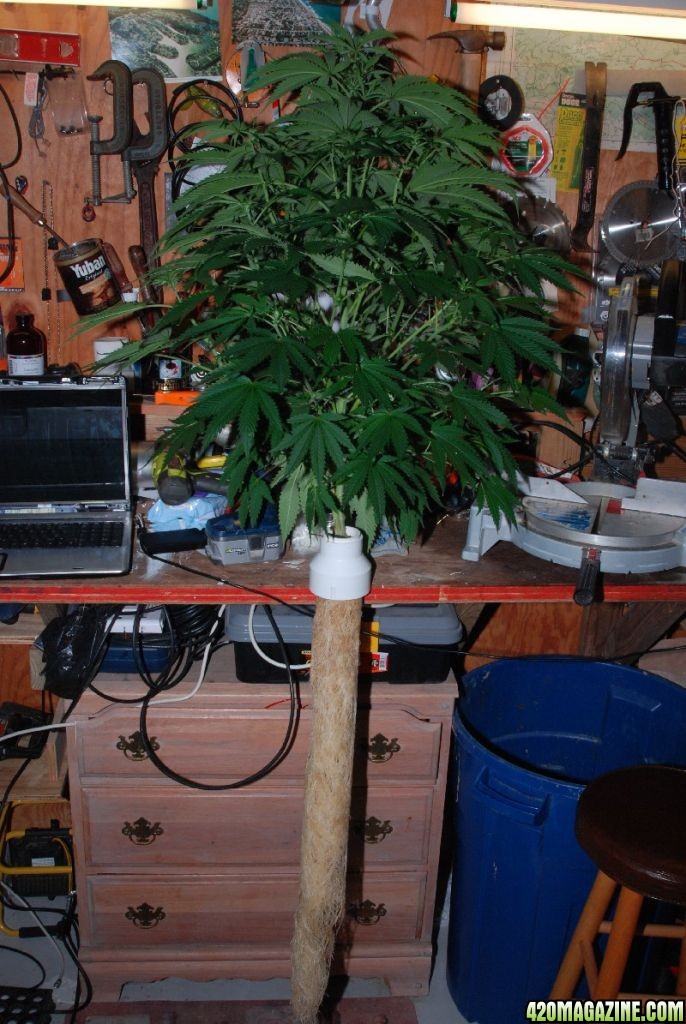- Thread starter
- #41
MountainHigh. I was writing this response as you were writing yours, so I had not seen yours until I finished mine, but this should answer your questions, and just because an accomplished grower you know (using non HPA method) failed to have success is no reason to blame the process. As for my results, severe cold weather and not enough light were the problems- not HPA. To do HPA right requires a huge learning curve over any other method, and this is why I share it, so others can get up to speed without making my mistakes. It has taken me 2 grows to put together all the hardware necessary to do it right (short of adding an accumulator system), and get a feel for it ...
WOW. Really? I guess no one here took biology or zoology, but then if you had, we wouldn't be having this conversation cause all of you would know exactly why NASA spent so much of our tax dollars developing HPA, and you, too, would have a HPA system.
One last try
The mouths of the root cells are microscopic. The size of a single LPA droplet is like being hit in the face with a bunch of water balloons, the smallest being the size of giant pumpkin. Not only would this overwhelm you, your reaction would be to close your mouth to keep from drowning. And you will keep it closed until the assault is over, and you dry out. Ditto the root cell mouth.
In an aero environment, the cell mouth stays closed until the atmosphere around it has dried sufficiently for it to feed. Alas, LPA repeats this process roughly every 15 minutes for 15 minutes-24/7. These roots barely get any food, even though mass quantities are provided.
HPA is like squirting water into your mouth from a small squirt gun, except HPA delivers the nutrients in an aerosol form (10-50 microns) sizes that are easily consumed by the root cells. The most advanced vitamin delivery methods for humans are small aerosol spray bottles that mimic what HPA does. However, HPA is hardly better when the feed times are too long, as most are doing. YOU GOTTA SHORTEN THE FEED TIMES.
I have personal experience seeing my root development improve once I got that through my thick skull.
Using a 15 minute timer to feed, my roots looked like a mass of soggy spaghetti. Within days of replacing it with a iGS- 011 timer, whose lowest on time was ~ 23 seconds, lots side roots started coming out of each strand of the roots: these lateral growing root are called 'fish bones'. They provide more surface area for nutrients to be absorbed. My plants responded with considerably more growth, BUT...
Seasoned HPA growers reading my journal told me my fish bone roots weren't 'all that', and that if I really wanted to see explosive growth above ground, I needed to adjust my feed times below to < ONE SECOND! Alas, that requires incorporating an accumulator system-a pressure tank and all the equipment/controls to operate it. So if you think I am off the deep end, HA! However, I replaced my iGS timer with a Sentinel MDT 1, that gets close to ~ one second on time. Within 5 days of doing so, I saw tiny sites developing all over my fish bone roots. I call them fuzzies, cause they look like the fuzzy part of pipe cleaners. Their mouths are even smaller than the root cells. Fuzzies are a key element in plant development/growth. They will not develop unless the the nutrient particle size and feed times are properly adjusted. Also the nmner of mist heads plays a roll. Too many and you are over wetting the roots, so the volume of the root chamber is a factor in how many mist heads to use.
This tiny detail can take you from a .5g/w to 1 g/w (assuming you do a proper job of monitoring the other aspects. Is that worth it to you?
WOW. Really? I guess no one here took biology or zoology, but then if you had, we wouldn't be having this conversation cause all of you would know exactly why NASA spent so much of our tax dollars developing HPA, and you, too, would have a HPA system.
One last try
The mouths of the root cells are microscopic. The size of a single LPA droplet is like being hit in the face with a bunch of water balloons, the smallest being the size of giant pumpkin. Not only would this overwhelm you, your reaction would be to close your mouth to keep from drowning. And you will keep it closed until the assault is over, and you dry out. Ditto the root cell mouth.
In an aero environment, the cell mouth stays closed until the atmosphere around it has dried sufficiently for it to feed. Alas, LPA repeats this process roughly every 15 minutes for 15 minutes-24/7. These roots barely get any food, even though mass quantities are provided.
HPA is like squirting water into your mouth from a small squirt gun, except HPA delivers the nutrients in an aerosol form (10-50 microns) sizes that are easily consumed by the root cells. The most advanced vitamin delivery methods for humans are small aerosol spray bottles that mimic what HPA does. However, HPA is hardly better when the feed times are too long, as most are doing. YOU GOTTA SHORTEN THE FEED TIMES.
I have personal experience seeing my root development improve once I got that through my thick skull.
Using a 15 minute timer to feed, my roots looked like a mass of soggy spaghetti. Within days of replacing it with a iGS- 011 timer, whose lowest on time was ~ 23 seconds, lots side roots started coming out of each strand of the roots: these lateral growing root are called 'fish bones'. They provide more surface area for nutrients to be absorbed. My plants responded with considerably more growth, BUT...
Seasoned HPA growers reading my journal told me my fish bone roots weren't 'all that', and that if I really wanted to see explosive growth above ground, I needed to adjust my feed times below to < ONE SECOND! Alas, that requires incorporating an accumulator system-a pressure tank and all the equipment/controls to operate it. So if you think I am off the deep end, HA! However, I replaced my iGS timer with a Sentinel MDT 1, that gets close to ~ one second on time. Within 5 days of doing so, I saw tiny sites developing all over my fish bone roots. I call them fuzzies, cause they look like the fuzzy part of pipe cleaners. Their mouths are even smaller than the root cells. Fuzzies are a key element in plant development/growth. They will not develop unless the the nutrient particle size and feed times are properly adjusted. Also the nmner of mist heads plays a roll. Too many and you are over wetting the roots, so the volume of the root chamber is a factor in how many mist heads to use.
This tiny detail can take you from a .5g/w to 1 g/w (assuming you do a proper job of monitoring the other aspects. Is that worth it to you?









